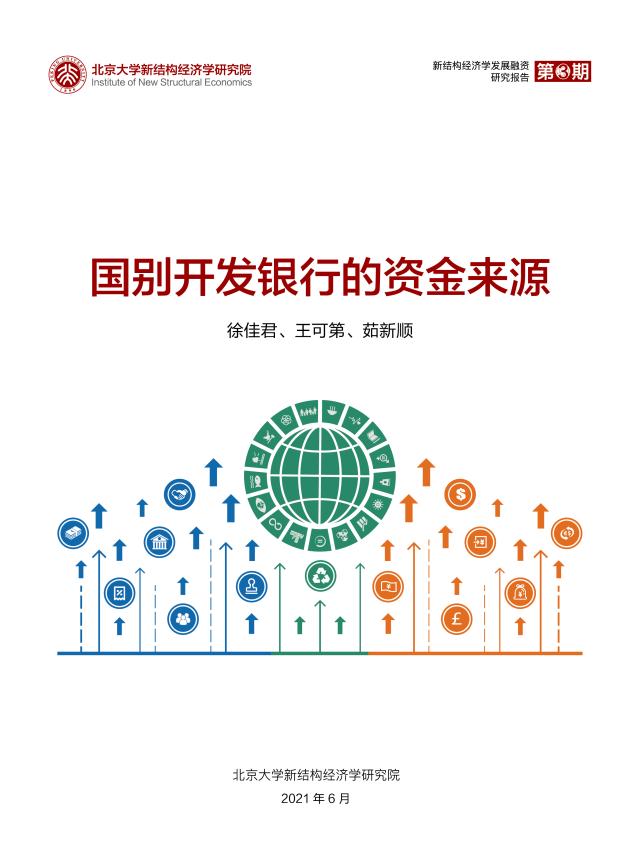英文首页﹀
Funding Sources of National Development Banks: The Third NSE Development Financing Research Report Launched
2021-06-17
The flagship report titled Funding Sources of National Development Banks co-authored by Professor Jiajun XU, Dr. Kedi WANG and Xinshun RU from the Institute of New Structural Economics of Peking University was officially released at Peking University on June 18, 2021. The report is the third New Structural Economics Development Financing Research Report. The New Structural Economics Development Financing Research Paper Series aims to build the first comprehensive database of worldwide development financing institutions (DFIs) and foster original research on the rationales, operations, performance, and impact of DFIs to improve understanding of these important institutions and achieve better development outcomes.
In the aftermath of the global financial crisis and the outbreak of the recent coronavirus pandemic, the importance of NDBs in playing a counter-cyclical role in times of crises, bridging the infrastructure financing gap, advancing structural economic transformation, and achieving sustainable development has received increasing recognition. The world is witnessing their renaissance. Access to large, long-term, and stable funding sources is a prerequisite for achieving NDBs’ objectives. However, so far a lack of data has prevented researchers from providing answers to the following questions: What are the main types of funding sources available to NDBs, and what are the stylized facts of such funding sources? To fill this gap, the Institute of New Structural Economics at Peking University is the first to systematically collect data on the funding sources of NDBs worldwide. We will propose typologies of NDBs’ funding sources, present basic empirical evidence regarding these funding sources, and identify the stylized facts to lay the groundwork for solid academic and policy research in the future.
Our key findings are as follows:
· First, generally, NDBs are funded either by public agencies or market actors. Either way, the government plays an important role in the financing process.
· Second, bond issuance is one of the most important funding mechanisms by which NDBs secure sovereign creditworthiness to raise funds from capital markets. Through either explicit or implicit guarantees, governments support NDBs to issue long-term bonds at relatively low prices.
· Third, internal financing and equity financing from governments play more important roles in NDBs than in commercial banks.
· Fourth, governments support NDBs’ funding mainly through share capital, borrowing and deposits from governments, the establishment of trust funds, government subsidies, tax incentives, service fees, and various other means.
· Fifth, on-lending and ODA from NDBs in HICs and MDBs play important roles in funding NDBs in developing countries, especially LICs.
· Last but not least, although NDBs that take household deposits may be prone to liquidity risks and maturity mismatch, nearly 30 percent of NDBs resort to take household deposits because they may have limited alternative funding sources.
Building on the key characteristics of funding sources for NDBs worldwide, the present report finally proposes 10 research questions for further investigation, including the appropriate financing structures of NDBs, the determinants of their financing structures, the impact of their financing structures upon the loan maturity, risk-taking behaviors, and financial instruments, and the role of NDB bonds in incubating domestic bond markets. We encourage scholars who may be interested in this area to join hands to conduct further research.
This report would not have been possible without the essential support of and contributions from research assistants proficient in accounting, finance and multiple languages such as Arabic, English, French, Portuguese, and Spanish. The team has benefited greatly from the constructive feedback from peer reviewers.
Download the Report:
Chinese Version English Version



